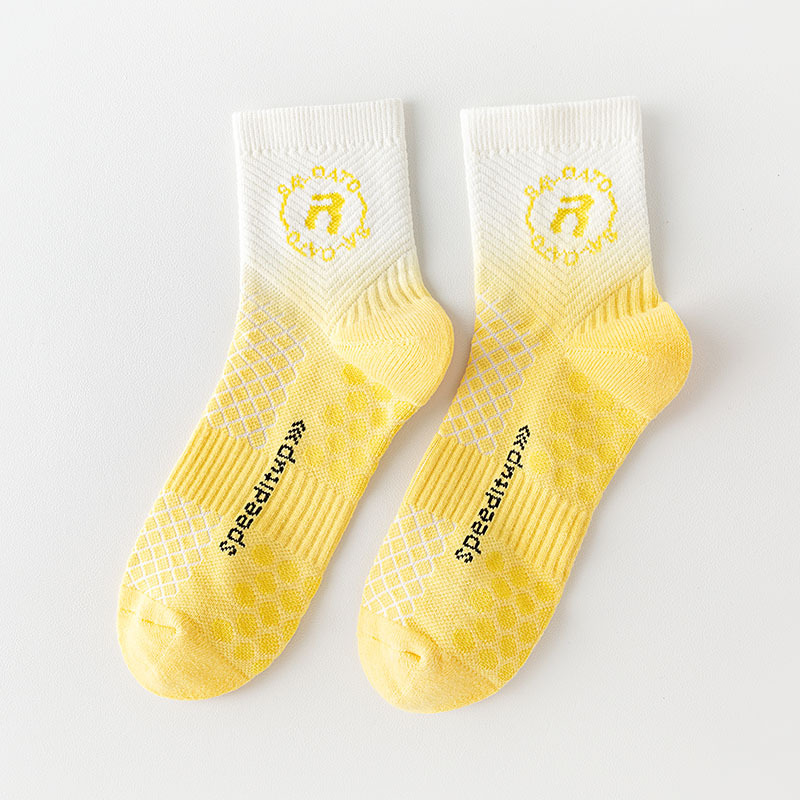

Women's socks are made from a variety of materials, each with its own set of benefits and drawbacks. Here are some of the most commonly used materials:
Cotton
Benefits:
Breathability: Cotton allows air to circulate, keeping feet cool and dry.
Softness: It is comfortable and soft on the skin.
Absorbency: Cotton can absorb moisture, reducing the risk of blisters.
Hypoallergenic: Less likely to cause allergic reactions.
Drawbacks:
Retains Moisture: Cotton can hold onto moisture, which may lead to dampness and odor.
Durability: Less durable than some synthetic materials and may wear out more quickly.
Shrinking: Can shrink in the wash if not properly cared for.
Polyester
Benefits:

Durability: Highly durable and resistant to wear and tear.
Moisture-wicking: Dries quickly and helps keep feet dry by wicking moisture away.
Stretch: Often blended with other materials to provide a good fit and flexibility.
Color Retention: Holds color well, preventing fading.
Drawbacks:
Less Breathable: Not as breathable as natural fibers like cotton or wool.
Odor Retention: Can retain odors more than natural fibers.
Comfort: May not be as soft or comfortable as natural materials.
Wool
Benefits:
Insulation: Excellent at keeping feet warm in cold conditions and cool in warm conditions.
Moisture-wicking: Naturally wicks moisture away, keeping feet dry.
Odor Resistance: Naturally resists odors due to its antimicrobial properties.
Softness: Modern wool blends can be very soft and comfortable.
Drawbacks:
Care: Requires special care when washing to prevent shrinking or damage.
Cost: Can be more expensive than other materials.
Allergies: Some people may be allergic to wool.
Nylon
Benefits:
Strength: Very strong and durable.
Elasticity: Provides a good stretch, contributing to a snug fit.
Lightweight: Adds minimal weight to the sock.
Moisture Management: Often blended with other materials to improve moisture-wicking.
Drawbacks:
Breathability: Not as breathable as natural fibers.
Odor: Can retain odors.
Comfort: May not be as comfortable on its own, often used in blends.
Spandex (Lycra)
Benefits:
Stretch: Provides excellent elasticity and stretch, ensuring a good fit.
Shape Retention: Helps socks maintain their shape and prevents sagging.
Drawbacks:
Breathability: Not breathable, but usually used in small amounts blended with other fibers.
Cost: Adds to the overall cost of the sock.
Bamboo
Benefits:
Softness: Very soft and comfortable.
Breathability: Highly breathable and moisture-wicking.
Antibacterial: Naturally antibacterial, reducing the risk of odor.
Eco-friendly: Bamboo is a sustainable resource.
Drawbacks:
Durability: Not as durable as some synthetic fibers.
Cost: Can be more expensive than other materials.
Blends
Benefits:
Combined Properties: Blends combine the benefits of different materials to enhance performance.
Versatility: Can be tailored for specific activities and conditions.
Drawbacks:
Complex Care: May have specific care instructions due to the mix of fibers.
Cost: Blends can sometimes be more expensive due to the combination of materials.
Each material offers unique properties that can be advantageous depending on the intended use of the socks, whether it's for athletic performance, everyday wear, or specialized needs.